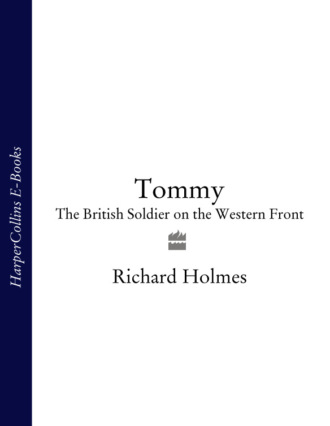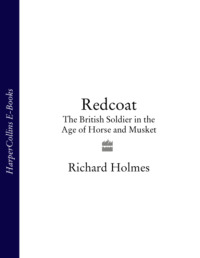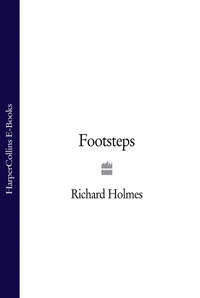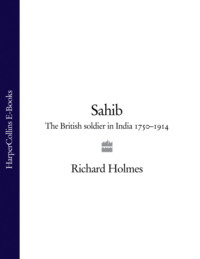
Полная версия
Tommy: The British Soldier on the Western Front
The trench, an outpost of the main Hindenburg line, prepared the previous year when the old Somme defences lay in front of it, is good even by German standards. Its sides are stoutly revetted with wood, and thick duckboards on its floor cover a deep drainage sump. Jumping in is easy, for the firestep rises from the trench bottom along the side facing the British. Getting out will be harder, for the back wall of the trench, topped by a broad earth parados, rises up like a cliff. The only sign of human occupation is a single dead German lying on his back on the duckboards staring at the sky. But when Abraham and Jarvis throw grenades down the steps of a dugout there are shrieks from below and a desperate cry of ‘Kamerad’. Two Germans struggle up the steps half carrying a third. Kersley and Pryce-Owen, bayonet men for the bombers here, seem torn between aggression and embarrassment as they shove the prisoners against the side of the trench. Lance Corporal Henry Adnam will watch them until the company commander allocates men from one of the follow-up waves to escort them back across No Man’s Land.
Atkins stands behind Abraham and Jarvis as they lob grenades over the next traverse. Two grenades, two explosions, a point so often taught but so easily and fatally forgotten. Atkins leads the way round the corner to find a short run of empty trench reeking of freshly-turned earth, wet wood and explosive. Kersley and Pryce-Owen pause at the next turning, and the bombers throw two more grenades. This time something is different. There is the scuffling of feet on duckboards before the grenades explode, and Atkins arrives in the next section of trench at the same time as a German senior NCO enters it from the other side.
Although he has been in France for about two years, most of the Germans Atkins has seen have been either dead or prisoners. There is certainly no mistaking this one’s purpose or determination. He has a trim beard, and wears a cap rather than the coal-scuttle helmets of the two soldiers behind him. A thick row of silver braid round his collar marks his rank; on his left breast is an Iron Cross. He fires his automatic pistol twice: time stands still as the empty cartridge cases catch the light as they spin up and away. There is a crash behind Atkins as Abraham falls forwards, hit in the chest, and then the German’s momentum carries him straight onto Atkins’s bayonet. He has no time to think, but leans forward onto his rifle, setting the bayonet firmly: he then gives it a quarter-turn (‘making the wound not only fatal, but immortal’, as base warriors, who have never seen a trench, like to say) and tugs it out easily enough. The German falls backwards with blood pulsing from his throat, but it is a measure of his resolve that he fires once more, at the very doors of death, missing Atkins by a hair’s breadth. Then he drums his heels on the duckboards and is still.
The other two Germans take the hint, drop their rifles and raise their hands, crying Kamerad. There is a deafening bang just behind Atkins as Jarvis shoots one straight between the eyes: only the seconds spent working his bolt to chamber another round enable Atkins to grab his rifle by the fore-end, jerk the muzzle upwards and yell: ‘No, no! They’ve jacked!’ Jarvis stops at once, like a drunk suddenly sobering up, turns to look at Abraham lying on the trench floor too obviously dead, swears, spits, slings his rifle and takes another grenade out of his waistcoat. He is just about to throw it when there is a loud shout of ‘Manchester, Manchester’ from behind the next traverse. And round it stalks a little corporal with a toothless grin, a grenade in his hand, and a lanky bayonet man behind him. ‘’Ello, choom,’ he says. The junction is complete.1
SWITZERLAND TO THE SEA
The Western Front drew men of my grandfathers’ generation to it like a malign and irresistible magnet. During the course of the First World War about 4 million British soldiers served there. From March 1916 there were never less than a million on the Western Front, and the total peaked at 1,721,056 on 1 August 1917. Although this book is concerned primarily with the British soldier, it is important not to forget that the British Expeditionary Force in France contained substantial Empire and Dominion contingents (from India, Australia, New Zealand, Canada and South Africa), and adding these to the narrowly British figure sees the total number of men under British command top two million in the summer of 1917.2 Some 1,724,000 British officers and men were killed, wounded or reported missing on the Western Front, about five casualties for every nine men sent out.3
Almost 400,000 Canadians went to France, where 210,000 were killed or wounded. Newfoundland, then not legally part of Canada, lost 3,661 casualties, not including Newfoundlanders serving, as many did, in other national contingents. The Australians, with over 300,000 men in France, suffered over 180,000 casualties, and the New Zealanders, with about 90,000 in Europe, almost 47,000. The Indian Army sent almost 160,000 men to France, and some 25,000 of them were killed or wounded. Although the bulk of South African soldiers fought in Africa, more than 14,000 were killed or wounded in France. There was inevitably friction between British and Dominion contingents, with Poms v. Aussies spats the best known. The tendency for popular history to emphasise national achievements at the expense of collective effort often makes it hard to remember that this was a giant imperial endeavour. But just as there was suffering and misery enough for all, so too ought the credit to be more evenly distributed.
From Britain’s point of view the Western Front was easily the most expensive of the war’s theatres: Gallipoli, the next most deadly (though it lasted less than a year), killed or wounded two of every nine men sent out. Although the Second World War was a far greater tragedy in human affairs (for instance, Russian military dead probably numbered 10 million) the British armed forces lost 264,000 killed in all theatres, far less than half those killed on the Western Front a generation earlier. The Western Front thus has the melancholy distinction of being the costliest theatre in which British troops have ever fought.
And yet the front needs to be kept in proper perspective. It would be wrong to suggest that it was more dreadful, in the First World War, than Gallipoli in its scorching, stinking summer or, on the Italian front, than the Julian Alps in mid-winter. And it would be equally wrong to rank it worse than some Second World War clashes, such as ‘The Kokoda Trail in New Guinea, flooded Dutch polders, the Hurtgen forest and the Reichswald, an Arakan monsoon, frozen foxholes in the Ardennes and the Apennines, the beaches of Tarawa and the putrid slime of Okinawa’.4 But what distinguishes the Western Front is its dreadful combination of loss of life, qualitative misery and its sheer, mind-numbing scale, made somehow more strange by its ‘ridiculous proximity’ to Britain.
In all, nearly 750,000 British and Commonwealth soldiers, sailors and airmen died on the Western Front. They rest in more than 1,000 military and 2,000 civilian cemeteries, Over 300,000 have no known graves, and are commemorated on Memorials to the Missing like the Menin Gate in Ypres and the Thiepval Memorial on the Somme. These cemeteries and memorials mark the course of the old front line as it weaves across Belgium and down into France, with concrete pillboxes, preserved (and some more evocatively unpreserved) trenches, whilst starkly rebuilt villages trace the war’s path.
The Western Front ran for about 460 miles, depending on the ebb and flow of battle, from the dunes of the North Sea coast, across alluvial Flanders, laced with drainage ditches and speckled with pollarded willows. Even the salient which bulged round the little Belgian town of Ypres had once looked handsome, as Lieutenant Guy Chapman reflected when he looked at it in the spring of 1917.
Two mornings later we sat on the Tower Hamlets ridge and surveyed the desolation. Many months hence, I was standing on this spot with a major in the Bedfords. ‘I was here in nineteen-fourteen,’ he said; ‘then you could not see half a mile for the woods.’ It was scarcely credible. In nineteen-seventeen, it was as bare as a man’s hand. It could not, one thought, ever have been otherwise. Could such destruction have been wreaked? Were these puke acres ever growing fields of clover, beet or cabbage? Did a clear stream ever run through this squalmy glen? This, the map tells you, was once a magnate’s estate. Now the lawns are bare of grass. The ornamental water has been replaced by more recent landscape gardeners; it is a quag of islands and stagnant pools, over which foul gases hang.5
Henry Williamson, who knew the salient as a private in the London Rifle Brigade in 1914 and later as an officer in the Bedfords, observed that it:
had the outline of a skull, with teeth trying to crack Ypres … A fit man can easily walk round the skull’s outline in a day; but in ’17, could he have walked without human interference, he would have dropped exhausted, before he had finished a hundredth part of the way, and been drowned with his face under the thin top mud.6
Graham Seton-Hutchison, infantry officer turned machine-gunner, mused on the way that nicknames, chosen when the world was green, now veiled nameless horrors. ‘God knows what cynical wit christened these splintered stumps Inverness Copse or Stirling Wood,’ he wrote. ‘And who ordained that these treacherous heaps of filth should be known as Stirling Castle or Northampton Farm?’7
Further south came the Lens coalfield with its winding gear, slag heaps and miners’ cottages, and then the escarpment of Vimy Ridge north of Arras. There the front line climbed onto the great chalk expanse of Artois and Picardy – open, confident countryside which lifted the spirits of soldiers marching down from the mud of the Ypres salient, partly because it looked like the last bit of England that most of them had seen, for it was ‘effectively an extension of the Weald anticline in southern England’.8 Lieutenant G. F. Ellenberger of the King’s Own Yorkshire Light Infantry described his arrival on the uplands above the Somme in the spring of 1916:
The poplar-lined pavés straight-stretching across the continuous plains of the North were a thing of the past; the road on which we were wound up and down following the valley on our left, on the other side of which the country rose in delightful hills; in the bottom of the valley flowed the Somme; the land we were traversing recalled the downs of Hampshire, its chalky slopes undulating and covered with coarse grass, and here and there dotted with dark copses and small woods. It was a sumptuous new world in the morning mist, seeming almost as it were home to which we had come from the flat mud of Flanders.9
Charles Carrington of the Royal Warwickshires thought that ‘it might be Kent if it wasn’t Picardy’. And Captain Rowland Feilding, fresh to the Somme from Flanders, told his wife how
The ground is becoming strewn with a great variety of wild flowers. Few and far between are the wild lilies of the valley in bloom, which are much sought after by officers and men, and are therefore very difficult to find.
Another common flower is a white one to which I cannot give a name. It grows from a bulb and has leaves like a daffodil, but much narrower and with a white stripe. If only you were in the country I would send you some bulbs.10
This charming landscape was destined to be destroyed as comprehensively as the Ypres salient had been. Second Lieutenant Bernard Martin, of the North Staffordshires, wrote of his own fifteen months on the front that:
The most dreadful picture in my Somme gallery is a landscape – a wide upland slope, uniformly drab, dirty white, chalk mixed with decaying vegetation, nor a tree stump or bush left, just desolation, with a track named Crucifix Alley for men to walk round or through shell holes to the larger desolation of Delville Wood. The whole blasted slope clotted to the very edges with dead bodies, too many to bury, and too costly, the area being under constant fire from artillery. This awful display of dead men looked like a set piece, as though some celestial undertaker had spaced the corpses evenly for interment and then been interrupted. Several times I picked my way through this cemetery of the unburied. A landscape picture my memory turns up in horror.11
Captain Bruce Bairnsfather, infantry officer and cartoonist, noted the lethal connection between surviving landmarks and enemy fire. ‘A farm was a place where you expected a shell to come through the wall at any minute’, he warned; ‘a tree was the sort of thing gunners took range on; a sunset indicated a quality of light in which it was unsafe to walk round’.12
The front line crossed the meandering Somme, still running more or less due south, before swinging eastwards to follow the high ground above the River Aisne. From there it followed the Chemin des Dames, the Ladies’ Way, once a carriage road built so that the daughters of Louis XV could drive from Compiègne to the Château de la Bove, seat of the Duchesse de Nemours. Although the British passed this way in 1914 and again in 1918, from the Chemin des Dames eastwards the front was French-held. Yet the process of converting landscape to desolation was just the same, and was all the more resented because the men who fought on this blighted landscape had often lived there too. Almost three-quarters of French soldiers were peasants, and the ravaging of their land and the destruction of little villages that had stood on it for a thousand years went to their hearts. In March 1917 a French trench newspaper told how:
The ruins of the village, entirely smashed up by bombardments, scarcely made up, here and there, a few sections of wall with a sinister whiteness, from which emerged, like a sad wreck, the skeleton of a church, horribly bony, torn, murdered, mangled; a fountain and a cross remained intact, side by side, in the middle of the dead hamlet. All around, desperately white stones strewed the ground, smashed up higgledy-piggledy, piled up in heaps, amongst shell holes, plaster, burnt woodwork, with only a few briar hedges to throw their black shadows onto this livid landscape. Anyone who has not seen this little place with the straight road passing its collapsed homes, cannot understand what intense emotion, what dark and chilling sadness, what unspeakable agony is revealed by this vision of desolation.13
Next, the front ran across the dry, chalky plateau of Champagne – like Artois but on an even greater scale – to disappear into the mighty forest of the Argonne. It emerged on the Meuse at the little fortress town of Verdun, its bare uplands ravaged in the fighting of 1916 and, even to my English mind, still quite the most evocative spot in the whole of this belt of murdered nature. The line then followed the right bank of the Meuse past St-Mihiel, and then climbed up into the Vosges, to end, on the hills of the Swiss frontier, in geography almost as unlike that of the Flanders coast as it is possible to imagine.
John Masefield thought that the front could best be understood as a river flowing across the landscape, straight here, meandering there, sometimes wide and sometime more narrow. In some areas normality came very close to its bank. Private Robert Case of the Royal Wiltshire Yeomanry told his parents in July 1915 that: ‘Back behind the lines there are, except for quantities of khaki, no indications of the biggest strafe the world has known. The land is tilled up to say 1½ miles of the firing line, and in many cases within 1,000 yards.’14 In others, like the Somme sector in 1916–18, repeated attack and counterattack widened the front to what was, literally and metaphorically, a broad marsh. ‘I cannot give you any conception of what the battlefield is like now,’ wrote Masefield to his wife in October 1916,
but if you will imagine any 13 miles x 9 miles known to you, say from Goring to Abingdon, raking in Dorchester, Wallingford, Nettlebed and the Chilterns above Goring, you will get a hint of its extent. Then imagine in all that expanse no single tree left, but either dismembered or cut off short, & burnt quite black. Then imagine that in all that expanse no single house is left, nor any large part of a house, except one iron gate & half a little red chapel, & that all the other building is literally blasted into little bits, so that no man can tell where the villages were, nor how they ran, nor what they were like.15
The Western Front was speckled with architecture which reflected its past. The great squares of Béthune and Arras, with their arcaded walks and florid house fronts – redbrick for Flanders, relieved by honey-coloured stone for Artois and Picardy – were reminiscent of the plaças in Spanish cities, for this was once the Spanish Netherlands. Officers and men with a literary or historical bent, and there were many, mused on architectural detail. As 4/Coldstream Guards slogged across Artois in late 1915 an officer observed ‘a comic incident’:
Sergeant Melton was marching next to me. Behind us were two educated men, Sergeant Oliver and Corporal Newton – who started a discussion about the relative merits of Hazlitt and Goldsmith. To this exchange, which we could not help overhearing, Melton reacted with ill-concealed disgust. When we passed a partly-restored church Oliver and Newton discussed its date. One of them suggested it might be six hundred years old. Melton, who had good eyesight, noticed that the restored front door had a date on it. He half turned round, and, with a rictus of sarcasm, addressed Sergeant Oliver as follows: ‘You great booby, how can it be that old when it has 1857 over the door?’16
Churches often had harsh and unpromising exteriors but were prettier inside. Captain James Dunn thought that Doullens church, though ‘nondescript and unattractive without, has fine early twelfth-century detail within’, as well as ‘finely-preserved mid-Gothic arching’.17 Private Frank Richards, of the same battalion, saw things with a slightly different eye. ‘Stevens and I visited the cathedral,’ he wrote of Rouen, ‘and we were very much taken with the beautiful oil paintings and other objects of art inside. One old soldier who paid it a visit said it would be a fine place to loot.’18 However, some private soldiers were more appreciative. Stapleton Tench Eachus, a Royal Engineers signaller, explained why he had mixed views about the church of St-Gilles at Epagnette in mid-1916.
The church is an old one and not by any means remarkable for its structural architecture, at least that was my impression. It had however been elaborately decorated and the walls and pillars painted in divers hues. The paintings, which were hung about the building, constituted in my view the most remarkable feature to be seen in this place of worship. Perhaps however my vision in such matters may be influenced in a prejudicial direction on account of the fact that having had the privilege of visiting that most wonderful sumptuous church, St John’s at Valetta, Malta, one is apt to judge readily and in so doing overlook the claims of those of less repute.19
Men were often struck by the way that the names of bars, hotels and restaurants reflected the area’s turbulent past. A tavern on the Brussels road outside Mons, at the scene of the first clash between British and German cavalry on 22 August 1914, was named La Reine d’Hongroie, after the Queen of Hungary: Maria Theresa, when Mons was in the Austrian Netherlands. Aux Armes de France with its Valois blue with golden lilies and L’Ecu de France with its crown had both survived three republics, and Le Bivouac de L’Fmpereur bore the distinctive silhouette of the little corporal. The peasantry slaked their thirst in a score of establishments named Les Cultivateurs, and there were horses, prancing or ploughing, black and white. There was the double-headed eagle for the Hapsburg Empire and his crowned cousin for the French, and even, as a sharp-eyed army doctor recorded, Au Grand Marlbrouck named after the first Duke of Marlborough and La Reine d’Angleterre after his queen.20
This was a land already marked by war. Many were struck by the bizarre connection of ancient and modern. When Charles Carrington returned to the battlefields in 1923 he found:
a trench still full of the flotsam and jetsam of war. I dug an old gun out of the mud and found to my surprise that it was not a modern rifle but a Brown Bess musket, dropped there by some British soldier during Wellington’s last action against a French rearguard in 1815.21
There was fighting there long before Wellington. In the sixteenth century the northern border of France followed the line of the Somme, as the fortifications at Montreuil, Doullens and Péronne, so familiar to British soldiers of the war, still demonstrate. Philip II of Spain built the great monastery-palace of El Escorial, just north of Madrid, to celebrate victory over the French at St-Quentin in 1557.
But the rising power of France was not to be denied, and the border moved inexorably northwards. Cyrano de Bergerac fought the Spaniards at Arras in fiction, and the future James II of England fought them in fact when Duke of York, and a lieutenant general in French service. ‘I joyn’d the Army by Peronne …’, he wrote.
About the 16th [July 1654] … wee began our march towards Arras, and camp’d at a village called Sains, near Sauchy-Cauchy which lys between Cambray and Arras … The next day we continued our march towards Mouchy-le-Preux … Monsieur de Turenne’s own quarter was at this place of Mouchy … Monsr. de la Ferté had his quarter at the right hand of our Line down by the side of the River Scarpe, at a Village called Peule.
Give or take the vagaries of spelling, James’s countrymen would have recognised Cambrai and Monchy, Arras and the Scarpe, though they might have reflected grimly that a battle then cost both sides ‘not … above four hundred … I remember but one Collonell, M. de Puymarais, Coll of horse, a brave young gentleman …’.22 There were to be rather more brave young gentlemen stretched out on the slopes between Monchy and Arras when the British 3rd Army assaulted the place in April 1917.
The French fortified the captured ground. Vauban’s pré carré was a double line of geometrical artillery fortresses, one running from Gravelines to Arras and on to Avesnes, the other from Dunkirk to Ypres, Menin and Valenciennes to Maubeuge. The bastions and ravelins of this fortification, built to resist the close-range pounding of heavy guns, proved surprisingly resistant to more modern artillery, and thousands of British soldiers were to retain grateful memories of casemates beneath the ramparts at Ypres, which accorded a measure of protection hard to find elsewhere in or around that blighted town. They also housed the ‘offices’ of one of the best-known trench newspapers, The Wipers Times, whose first edition had its own view on architecture:
FOR SALE, cheap, Desirable Residence. Climate Warm: fine view. Splendid links close by, good shooting. Terms moderate. Owner going abroad. Apply Feddup, Gordon Farm, nr Wipers.23
There were older defences too. Coucy le Château, the finest medieval castle in France, lay on the British line of retreat in 1914. One of its lords had married Isabella, daughter of Edward II of England, and was created Earl of Bedford. His house already had the proud boast:
Roi ne suis, ne Prince, ne Duc, ne Comte aussi, Je suis le Sire de Coucy.24
The castle’s methodical destruction when the Germans withdrew from the area in 1917 offended the capable and soldierly Crown Prince Rupprecht of Bavaria, the local army group commander, who protested to his own high command that it had no military value. Henry V’s men knew the castle at Peronne, and when 2/Royal Welch Fusiliers moved down south in mid 1916, they
saw Corbie across the Somme. It cold-shouldered Henry V when he marched along its ridge, to turn at Agincourt on the host that beset him. But from what unknown church near-by did Bardolph take the golden pyx?25
Captain Reginald Tompson, a railway staff officer in 1914, was delighted to find himself in the village of Le Bourget, just outside Paris, the scene of a battle in the Franco-Prussian War. ‘This is the very place immortalised by de Neuville in his picture Le Bourget’, he exulted in his diary. ‘I must go and see the church. They tell me the scene is exactly as in ’70.’26











